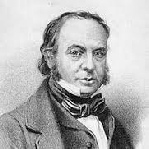



The Parish Church of St George the Martyr, Waterlooville

The Uganda Experience
Steve Peach came on the 13th March to give us a talk and slide show titled "The Uganda Experience".
Steve is a Senior Ranger at The Queen Elizabeth Country Park. He started working there in 1981, he was given a 6 months contract and has been there ever since. He says he feels very lucky to be working in such a beautiful place where the scenery and wildlife is wonderful. Butser Hill is called “Grandfathers’ Bottom” for obvious reasons.
The idea of “Twinning the Queen Elizabeth Parks” came about when ranger Charles Etoru from Queen Elizabeth National Park met Steve whilst attending an International Ranger Federation Congress in Kruger National Park, South Africa. Finding that they were both presenting displays about Queen Elizabeth Parks, which talks were identical, a friendship was made and the idea of Twinning the Parks and bringing Conservation Communities together was born.
Kampala is the largest city and capital of Uganda. On the slides we were shown various species of birds, there are 600 including the Crested Crane which is the national symbol and the national bird of Uganda, then there is the Great White Pelican which is Steve's favourite, and the “Weaver” bird which is brightly coloured, usually in reds or yellow and black. Steve felt a little sorry for this bird because the male weaves the nests which takes quite a while to do, then the female comes along and decides she doesn't like the way it has been made, and pulls it apart, then the male has to start all over again.
On some of Steve’s other slides we were shown Elephants and Buffalos, the Buffalos stay mostly in open grass lands, but also like to keep in swampy areas where they flock during hot temperatures to cool off and drink water, we also saw Lions which are short sighted, and they actually climb trees, which is uncommon. They climb the trees to protect themselves against the numerous biting tsetse flies on the ground level. They are commonly seen sleeping on branches in the afternoon as they digest their food after lunch.
There are many different kinds of snakes found in Uganda. They are normally quite shy and slither away as they sense your approach. The Rock Python is Africa’s largest snake. They are not venomous and kill their prey by strangulation wrapping their bodies around them. You will not come across too many, a good place is the bat cave in Maramagambo Forest in Queen Elizabeth National Park.
We also saw some Dragonflies, they are bright colours of orange, black and yellow.
The rangers in Queen Elizabeth National Park in Uganda fly over to spend time in Queen Elizabeth Country Park near Petersfield, whilst Steve and other rangers from here fly to Uganda. The rangers in Uganda only earn £60 a month, so the Queen Elizabeth Parks Twinning Project was created to bring together the individuals, schools and communities of these two parks. All involved volunteer their time and help in fund raising, organising the projects, working with local communities and schools in promoting community conservation action in both Queen Elizabeth Parks.
On one of the slides we saw Dr. Margaret who is the Chief Vet. She has the job of travelling around to see the various different animals who need her help may be by removing a piece of wire around a leg etc.
We saw some cute Mongoose. The Mweya Peninsula in Queen Elizabeth National Park is the best place to see them in Uganda. They are about the size of a small cat and have a large head and small ears. They have long claws with which they can dig and even defend themselves.
Denplan have donated laptops which means that children and teachers in rural West Uganda have the chance to make contact with their partner schools in the UK.
All the volunteers help to raise money by having craft stalls in Uganda. The volunteers from this country buy £100 worth of goods from the craft stall to sell. That money raised then goes towards the rangers going to Uganda and the rangers coming over here.
Twinning Project is currently working with five primary schools and two senior schools in the UK.
Schools communicate with the Uganda partners through a range of methods including internet, texting and mobile phone and writing letters and sending out pictures.
Uganda is home to thousands of hippos, found in its many lakes and rivers. The Counting of Hippos in Uganda is carried out once in two years with the main aim of monitoring the population trend of these elegant mammals. The counting is conducted on a boat, but in some parts where the rivers are narrow, it is done on foot.
A very interesting talk.
Isambard Kingdom Brunel
We had a very interesting talk on the 10th April from Brian Barrett and his wife Doreen about Portsmouth and the Brunels.
Isambard Kingdom Brunel was born on the 9th April 1806 in Portsmouth.
His father was a French engineer who had fled France during the revolution. His name was Mark Isambard Brunel and he was born on the 25th April 1769.
During Mark Brunel’s service abroad, the French Revolution began in 1789. In 1792 Mark Brunel’s frigate paid off its crew, and he returned to live with his relatives in Rouen. Whilst staying in Rouen, he met Sophia Kingdom, a young Englishwoman who was an orphan and was working as a governess. He left her behind when he fled to Le Havre and boarded the American ship Liberty, bound for New York.
Whilst Brunel was in America, Sophia Kingdom had remained in Rouen, and during the Reign of Terror, she was arrested as an English spy, and was expected to be executed. She was saved by the fall of Robespierre in June 1794. She was then able to leave France and travel to London.
Brunel met up with Sophia in London and they were married on the 1st November 1799.
Isambard Kingdom Brunel was educated at Hove, near Brighton, and at 14 went to study in Paris. In 1823 he embarked on his first engineering project, working with his father on the building of the Thames Tunnel from Rotherhithe to Wapping in East London.
His engineering status was established by his work on the Great Western Railway (GWR) linking Bristol and London. At the age of 27 he was appointed GWR's Chief Engineer.
He was not content with railways, the far sighted Brunel persuaded the company which backed the Great Western Railway to consider trans-
Brunel’s next steamship quickly overshadowed her older sister. At the time of the SS Great Britain's launch in 1843, she was the largest ship in the world. The ship carried 252 first and second class passengers and 130 crew.
In 1853 the Eastern Steam Navigation Company employed Brunel to build the Great Eastern. The huge ship was designed to carry 4,000 passengers. This led to a series of engineering problems and the strain of the work took its toll on Brunel’s health.
The world famous Clifton Suspension Bridge was designed by Isambard Kingdom Brunel, although he never actually lived to see his creation finished in 1864. Work began in 1831, but the project was dogged with political and financial difficulties, and by 1843, with only the towers completed, the project was abandoned. Brunel died on the 15th September 1859 aged 53. He was buried in Kensal Green Cemetery in London. The Clifton Suspension Bridge was completed as his memorial.
The Clifton Suspension Bridge’s Spectacular setting on the cliffs of the Avon Gorge has made it the defining symbol of Bristol. Although built for pedestrian and horse drawn traffic, the bridge was so ingeniously constructed that it is now capable of carrying around 4 million cars a year, and has become a major route to the motorway network.
Priscilla Barlow
Festival Edition 2014
St George’s Ladies Group
